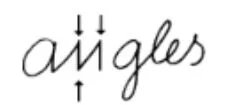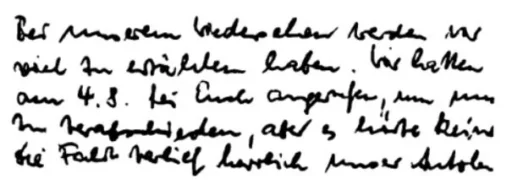Handwriting is more than a method of communication—it’s a unique expression of personality and psychological tendencies. In the field of graphology, handwriting analysis uncovers the subconscious patterns that define how individuals relate to themselves and others. Among the most revealing features are ligatures—the connecting strokes between letters.
What Are Ligatures in Handwriting?
Ligatures are the strokes that connect letters within a word. In graphological analysis, they are critical indicators of how a person thinks, feels, and interacts with the world. These forms often appear in the middle zone of handwriting and are difficult to alter, making them reliable for personality assessment.
The four primary ligature forms in handwriting analysis are:
- Angles
- Garlands
- Arcades
- Threads
Each type reflects different behavioral traits, emotional tendencies, and cognitive styles.
Angles: Indicators of Determination and Rigidity

Angular ligatures are sharp, pointed connections that reflect discipline, determination, and directness. Writers who frequently use angular strokes are often strong-willed and independent thinkers. These individuals are typically analytical, resistant to outside influence, and comfortable with confrontation.
However, excessive angularity may suggest rigidity, intolerance, and an inflexible or authoritarian mindset. It can also indicate a tendency toward internal tension or a confrontational attitude.
Associated traits:
- Independence
- Critical thinking
- Persistence
- Potential for inner conflict
Garlands: Signs of Flexibility and Sociability

Garland ligatures are soft, bowl-shaped strokes that connect letters smoothly. They suggest a friendly, open, and cooperative personality. Writers with moderate use of garlands are generally adaptable and eager to maintain harmony in social interactions. When overused, garlands may indicate emotional dependency, conformity, or a lack of originality. These individuals might avoid conflict to gain approval or maintain peace, often at the expense of authenticity.
Associated traits:
- Kindness
- Adaptability
- Sensitivity
- Possible insecurity
Arcades: Symbols of Reserve and Control

Arcade ligatures are arch-like strokes, often resembling upside-down curves. These formations are associated with emotional restraint, self-control, and calculation. Arcade writers tend to be private, cautious, and less expressive in both speech and behavior. In graphological interpretation, arcades can also point to social stiffness, secrecy, or dishonesty, especially when combined with other negative indicators. They may be used by individuals who intentionally mask their true emotions.
Associated traits:
- Emotional reserve
- Caution
- Self-control
- Possible pretense
Threads: Markers of Speed and Instability
Thread ligatures are light, rapid, and sometimes barely visible strokes. When used appropriately, they indicate mental agility, creativity, and fast decision-making.
Writers with primary thread strokes

Often think and respond quickly, excelling in fast-paced environments.
However, excessive or secondary thread usage

can signify mental fatigue, instability, or lack of clarity. These individuals may avoid responsibility or struggle with consistency.
Associated traits:
- High intelligence (in primary thread)
- Adaptability
- Impulsiveness
- Possible instability or vagueness
Ligature Combinations and Personality Complexity
Graphologists emphasize the importance of analyzing ligature combinations rather than evaluating one form in isolation. For example:
- Angles + irregularity: Impatience or irritability
- Garlands + light pressure: Yielding, submissive nature
- Arcades + large handwriting: Status consciousness or desire for prestige
- Threads + irregularity: Potential neurosis or mental fatigue
The interaction of these traits forms a more complete psychological profile, offering deeper insight into an individual’s emotional and cognitive makeup.
Final Thoughts
Graphology continues to be a compelling method for analyzing human behavior through handwriting. Ligatures—whether angular, rounded, arched, or thread-like—offer a reliable window into the psychological fabric of the writer.
By understanding these connective forms, individuals and professionals alike can gain valuable insights into temperament, communication style, and emotional tendencies. Whether used for personal development, professional assessment, or curiosity, handwriting analysis opens new possibilities for understanding the mind behind the pen.
Handwriting analysis has helped to understand one another in a relationship and make the relationship last. For a better relationship, try to learn handwriting analysis at KAROHS International School of Handwriting Analysis. Visit our website https://karohs.school/product/the-inner-circle-papers/ to see our product and follow our instagram @karohs.school for more information about handwriting analysis.

